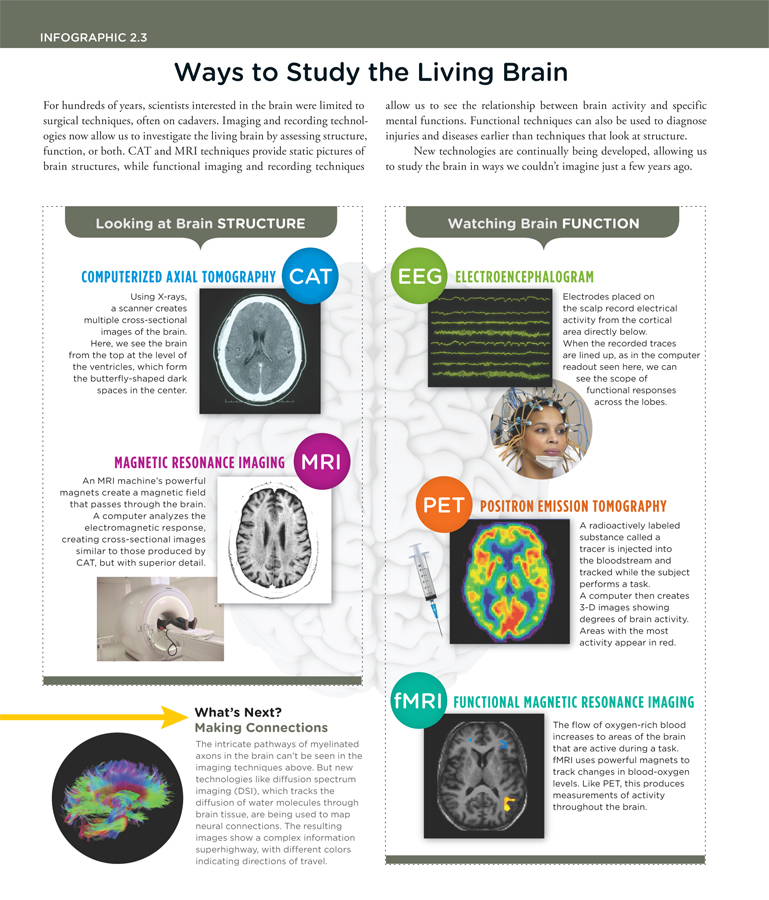Chapter 1. Ways to Study the Living Brain Infographic Activity
Infographic
Scientific American: Psychology
Infographic Activity 2.3: Ways to Study the Living Brain
Ways to Study the Living Brain

For hundreds of years, scientists interested in the brain were limited to surgical techniques, often on cadavers. Imaging and recording technologies now allow us to investigate the living brain by assessing structure, functions, or both. CAT and MRI techniques provide static pictures of brain structures, while functional imaging and recording techniques allows us to see the relationship between brain activity and specific mental functions. Functional techniques can also be used to diagnose injuries and diseases earlier than techniques that look at structure.
New techniques are continually being developed, allowing us to study the brain in ways we couldn’t imagine just a few years ago.
Click the image to enlarge.
Click "Next" to continue.
1.1 Quiz
1. Sajit was recently in a rather bad car accident, and despite the fact that he was wearing his safety belt he suffered a traumatic brain injury. His neurologist and neurosurgeon want to conduct an assessment that will reveal information about how Sajit’s brain is currently functioning. Of the following neuroimaging options, which would be the least useful for this particular purpose?
| A. |
| B. |
| C. |
| D. |
2. Neuroscientists are continually developing new and more advanced ways of viewing and studying the brain. The newest technique, called diffusion spectrum imaging (DSI), provides what advantage over previous assessment methods?
| A. |
| B. |
| C. |
| D. |
3. Lisette is put through a brain imaging technique where cross-sectional images of her brain are produced with greater detail than would be found using a CAT scan. The emphasis of this particular test is on brain structure, not function. What kind of test did Lisette experience?
| A. |
| B. |
| C. |
| D. |
4. Which of the following would be a detail associated with positron emission tomography (PET)?
| A. |
| B. |
| C. |
| D. |
5. Taylor has been sent to a sleep laboratory to assess whether or not he suffers from obstructive sleep apnea. Once there the sleep technician spends several minutes affixing electrodes to various areas of Taylor’s scalp. He tells Taylor, “we are going to record the electrical activity of your brain while you sleep to see if we can identify any unusual processes. Just sleep the way you normally would, and try to ignore the electrodes.” What type of technique is being used in this study?
| A. |
| B. |
| C. |
| D. |
6. What do computerized axial tomography (CAT) and magnetic resonance imaging (MRI) have in common?
| A. |
| B. |
| C. |
| D. |
Activity results are being submitted...